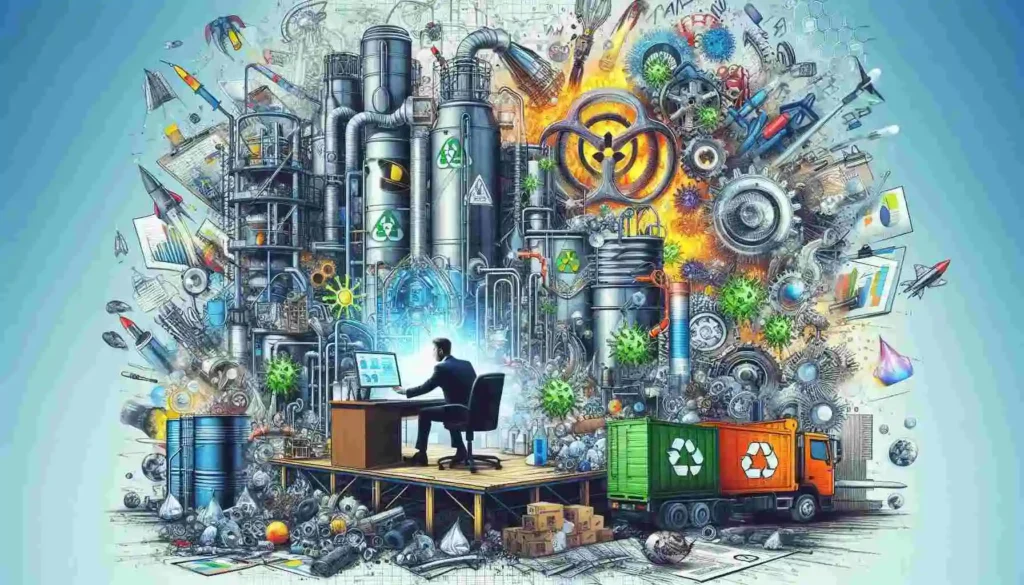Hazardous waste management techniques are evolving at an impressive pace. Driven by technological advancements, stricter regulations, and a growing focus on sustainability. As businesses and industries expand, so does the production of hazardous waste, posing significant threats to human health and the environment.
Understanding and adopting effective hazardous waste management techniques is more important than ever to minimize these risks and ensure safe disposal practices. In this article, we’ll explore the most innovative and efficient techniques currently shaping how we handle hazardous waste, offering insights into methods that protect our environment and promote a sustainable future.
Innovative Hazardous Waste Management Techniques
1. Embracing Waste-to-Energy Conversion
The concept of converting hazardous waste into energy is gaining momentum. This approach not only reduces waste but also generates renewable energy. Waste-to-energy processes like incineration, gasification, and pyrolysis use high temperatures to break down hazardous materials into energy-rich gases, which can be used to generate electricity or heat.
Incineration is the oldest method involving the burning of waste at extremely high temperatures to generate energy. Pyrolysis involves the decomposition of waste in the absence of oxygen, while gasification converts waste into a clean gas that can power turbines and engines. This approach decreases the dependency on fossil fuels and prevents harmful emissions that would otherwise occur during traditional waste disposal.
Companies like Covanta Energy are converting hazardous waste into valuable resources, turning potential pollutants into energy that powers homes and industries.
2. Thermal Treatment Techniques
Thermal treatment methods are the most effective hazardous waste disposal techniques. Two of the most commonly used methods in this category are incineration and thermal desorption.
Incineration involves burning hazardous waste at extremely high temperatures, turning it into byproducts like ash, gases, and heat. Thermal desorption involves heating the waste to a temperature where the contaminants turn into gas or vapor, which can then be captured and treated separately. Thermal desorption is a more environmentally friendly approach because it focuses on removing toxic substances without altering the base material.
3. Bioremediation: Nature’s Cleanup Crew
Bioremediation is rapidly becoming a favored green alternative in hazardous waste management. Unlike traditional methods that might involve incineration or chemical treatments, bioremediation uses nature’s own resources—microorganisms like bacteria, fungi, or plants—to break down toxic substances into non-toxic or less harmful byproducts. These tiny organisms feed on hazardous pollutants, converting them into water, carbon dioxide, and other harmless compounds.
4. Phytoremediation: Using Plants for Waste Management
Phytoremediation is an eco-friendly and cost-effective hazardous waste disposal technique that uses the natural abilities of plants to clean up polluted soil and water. This method involves using specific plants to absorb, concentrate, and neutralize toxic contaminants, including heavy metals, pesticides, and other hazardous substances. Plants like sunflowers, willow trees, and Indian mustard are often chosen for phytoremediation. This technique is most effective in sites with low to moderate levels of contamination, where traditional cleanup methods might be too disruptive or expensive.
5. Advanced Robotics and AI Integration
Robotics and AI are revolutionizing hazardous waste handling. Robots equipped with advanced sensors are now capable of performing tasks that were once risky for humans. These machines can safely sort, package, and transport hazardous materials with incredible precision, reducing the chances of accidents or exposure to toxic substances. AI-driven systems are playing a crucial role in making these robotic operations smarter and more efficient. Using data analysis and machine learning algorithms, AI can predict the best times to collect and process hazardous waste, preventing unnecessary delays. It also helps in identifying potential risks in real time, allowing companies to take preventive measures before issues arise.
6. Compliance with Evolving Regulations
Keeping up with regulatory changes is crucial in hazardous waste management. Platforms like the Environmental Protection Agency (EPA) offer updated guidelines on managing hazardous waste. These rules aim to reduce environmental damage, prevent health risks, and promote more sustainable practices. By actively following these guidelines, companies can not only reduce their environmental footprint but also gain a competitive edge by showcasing their commitment to sustainability and safety. Embracing these regulatory changes is essential to transforming hazardous waste management into a responsible and eco-friendly practice.
Conclusion
Adopting effective hazardous waste management techniques is crucial for safeguarding our environment and promoting sustainable practices. As technological innovations like AI, robotics, and bioremediation continue to advance, they provide safer and more efficient ways to handle hazardous waste. By embracing these methods, we can significantly reduce the environmental impact and ensure that hazardous materials are disposed of responsibly.
Looking to the future, the continuous improvement of hazardous waste management techniques helps heal the planet. By staying informed about evolving regulations and adopting these innovative solutions, businesses and communities can work together to minimize risks, recycle valuable resources, and protect our ecosystems. Through these efforts, we move one step closer to a cleaner, more sustainable world.
Frequently Asked Questions (FAQs)
1. What is hazardous waste management?
Hazardous waste management is the process of handling, treating, and disposing of waste items that can endanger individuals or the environment. It focuses on minimizing risks by using safe disposal methods, recycling, and treatment techniques to reduce the impact of hazardous substances.
2. What are the different types of hazardous waste?
The main types of hazardous waste include:
- Chemical Waste: Toxic chemicals and industrial solvents.
- Biological Waste: Medical and infectious waste.
- Flammable Waste: Substances that can easily catch fire.
- Corrosive Waste: Acids and substances that can corrode materials.
- Reactive Waste: Materials that react violently or produce toxic gases.
- Electronic Waste (E-waste): Old devices containing harmful metals.
3. How to identify hazardous waste?
You can identify hazardous waste by:
- Checking Labels: Look for hazard symbols on containers.
- Reviewing Safety Data Sheets (SDS): Check for disposal guidelines.
- Testing: Conduct tests to assess toxicity or reactivity.
- Using Regulatory Lists: Refer to official lists of hazardous substances.
- Observing Physical Signs: Note unusual odors, colors, or reactions.
Resources
